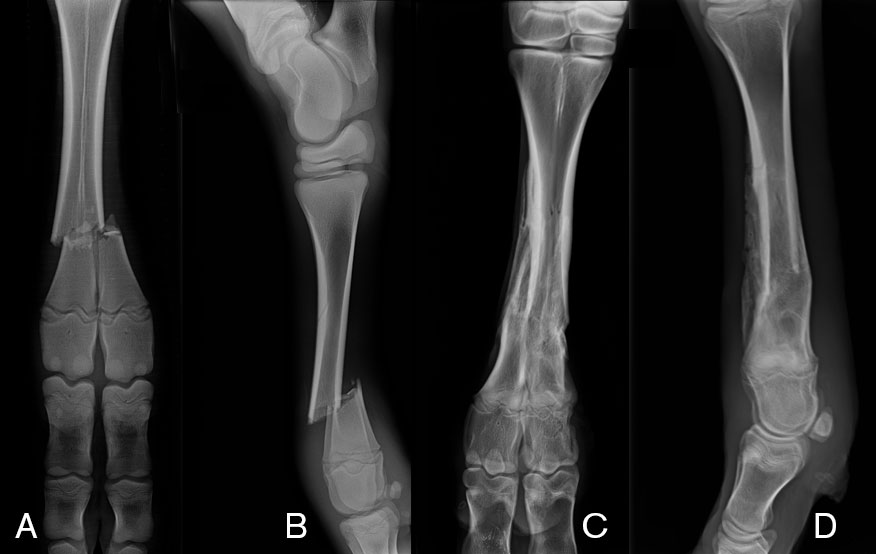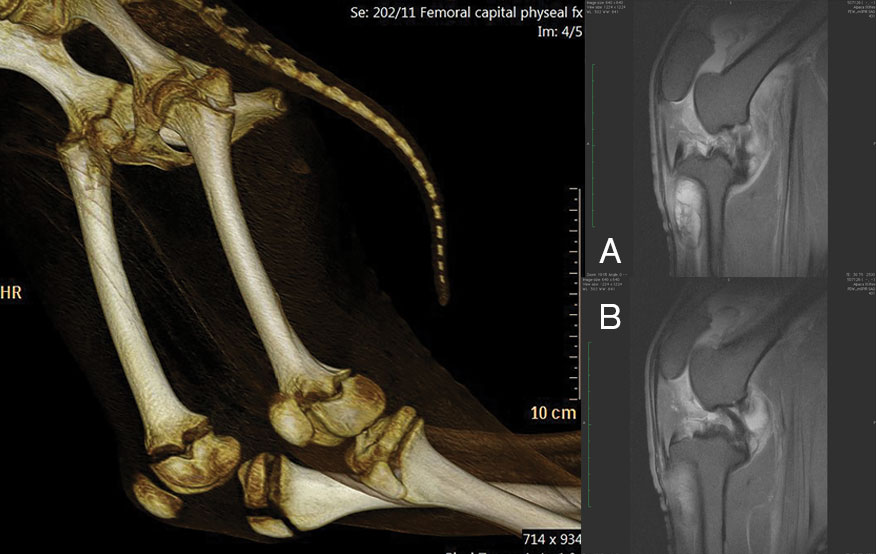Farm Diagnostic Imaging by Transdisciplinary Team
Clinical Connections – Summer 2016
The ability of the RVC’s Farm Animal Clinical Centre (FACC) to undertake an increasing amount of diagnostic imaging on farms and in the referral clinical centre has greatly enhanced the service that can be offered to referring vets and clients.
The advent of high quality portable diagnostic equipment means that some diagnostic techniques that could previously only be satisfactorily delivered in a veterinary setting can now be delivered on farms.
Peripatetic or ambulatory radiography and ultrasonography has proved particularly valuable for farm animal orthopaedic cases at the FACC. All livestock species covered by the service have benefited from developments in diagnostic imaging and the advanced facilities of the RVC.
On-farm peripatetic radiography and ultrasonography is especially useful in cases where the animal cannot be transported on welfare grounds or because it is too challenging to transport safely. The option is particularly relevant for cattle, in the farming context. The equine team also offers a peripatetic service to clients.
In cases where farm animals have to be transported to the RVC, the farm will be able to maintain herd health accreditation and disease-free status as this is not affected by a hospital admission. No standstill period will be applied to the farm. The FACC team will help process all movement paperwork as required for the client.

The FACC has a transdisciplinary and holistic approach to all cases, enabling the team to provide the best possible care and outcome for clients and patients. Dedicated farm animal clinicians oversee cases and ensure that each animal gets the most appropriate species-specific care, underpinned by the latest research.
The RVC is fortunate to have a specialist large animal radiology team, which is one of 3 in the world. In addition large animal orthopaedic surgeons and small animal orthopaedic specialists also work together on appropriate cases where needed, especially where the disease is similar to that seen in small animals.
The RVC’s specialist anaesthetists provide immediate anaesthesia in surgical cases and for some diagnostic procedures. The anaesthesia and analgesia team also helps with longer term analgesic control plans for large animals.
The imaging modalities used by the FACC include radiography, ultrasonography, CT and MRI. All imaging except MRI can be done with animal awake or under sedation. This minimises patient risk as well as the cost to clients.

The expertise and facilities at their disposal enables the FACC team to diagnose and provide specialist treatment or treatment protocols for orthopaedic cases in all livestock species. These include cattle, sheep, goats and camelid species.
Commenting on the value of the multidisciplinary approach and the peripatetic facilities, FACC head Dr Alex McSloy said: “This approach has made a real difference to the accuracy and speed with which we can accurately diagnose and treat patients and give a realistic prognosis. Cases can be managed with much more clear and accurate guidance, leading to improved welfare and a better outcome for the client as well. All farm species have benefitted from the advanced and varied facilities from radiology to CT and MRI.”
The FACC offers a very reasonable all-inclusive initial orthopaedic package. The price includes initial consult and imaging and report. Once diagnostic procedures have been carried out the variety of treatment options available will be discussed with the referring vet and owner. Once a diagnosis has been made treatment can be undertaken at the RVC, or by the referring veterinarian where appropriate.
Sign up to get Clinical Connections in your inbox rvc.ac.uk/clinical-connections
